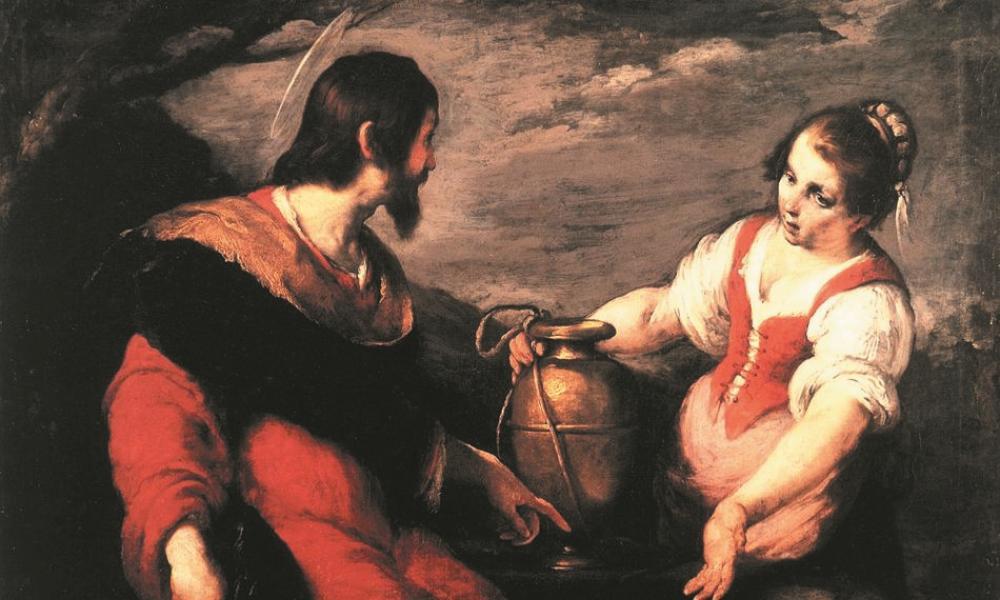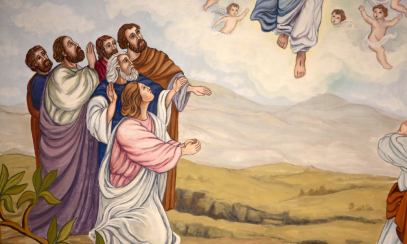
Sacraments Part 2: Reconciliation
What We Do is What We Believe
What We Do is What We Believe
Healing our relationship with God and one another
Human existence is all about relationships. We come into this world with a need to be loved and to love in return. As infants, our parents or caregivers are vital to our existence. As children we need to be nurtured in a family and yet expand our circle of friends. We date and experience sometimes painful break-ups. We search for that “special someone” with whom we can share our life. When we offend a friend or family member, we seek forgiveness, so that we might repair our relationship. God knows this; that is why He invites us to the sacrament of reconciliation.
First and foremost, baptism is the sacrament that forgives personal and Original Sin. Here, the Christian receives a gift of metanoia (a conversion) to the perfect love of God and the grace to live as Christ taught us. In the sacrament of the Eucharist, too, we are welcomed to God’s table and invited to share again and again in the redeeming sacrifice of Christ. But in a special way, the sacrament of reconciliation offers us an opportunity to encounter the living God, to confess our sinfulness, and to seek God’s forgiveness.
The fundamental task of the Church is the prophetic announcement of Christ, the one who reconciles the world to the Father. We are ministers of that reconciliation.
Reconciliation between God and His people was brought about by our Lord Jesus Christ in the mystery of his death and resurrection (Romans 5:10). The Lord entrusted the ministry of reconciliation to the Church in the person of the apostles (2 Cor. 5:18ff.). The Church carries out this ministry – by baptizing – with water and the Holy Spirit. – Because of human weakness, however, Christians break off their fellowship with God by sinning. The Lord, therefore instituted a special sacrament of penance for the pardon of sins committed after baptism – (Decree, SCDW, 1973).
Why do we confess our sins to another human being? As an ordained minister of the Church, the priest represents Christ. We can expect the priest to receive us with the same love and compassion as Jesus. Just like us, the priest knows what it is to need forgiveness. God transforms this very humanness into the medium of life-giving grace. When we hear the priest’s words of absolution, we hear Christ’s words of pardon and mercy.
God understands our human nature. While God always hears the silent call of one who is sorry for their sins, He knows that we need to acknowledge our offenses out loud and to experience forgiveness in words and gesture. Not only do we need to confess our sins, but we need to be relieved of the burden of them. That is why the Church teaches that private (auricular) confession is the ordinary means of celebrating the sacrament.
Timeline: How did confession come about?
Old Testament
- Israelites developed rituals for turning from sin to covenant living – sacrifices, ritual washings or purifications, sin offerings. Rabbis would “bind or loose” members of community. As a people, they would celebrate a Day of Atonement.
New Testament
- John the Baptist preaches repentance and practices ritual washings in the River Jordan (Mt 3; Mk 1; Lk 3; Jn 1-3).
- Samaritan woman meets Jesus at the well where He tells her of her sins and offers the water of everlasting life (John 4).
- Woman caught in adultery The crowd is about to stone the woman, Jesus asks if there is anyone sinless who might cast the first stone. He tells her to sin no more (John 8: 1-11).
- Holy Spirit Jesus says to the apostles, “Receive the Holy Spirit; whose sins you shall forgive they are forgiven them; whose sins you shall hold bound, they are held bound.” (John 20: 22-23)
- Disciples to correct sinners Jesus gives the community a mission of reconciliation (Matthew 18: 15-18).
- Paul teaches the Corinthians to avoid association with amoral people and expel them from the community (1 Cor 5: 11-13) and that if one hurts another, he hurts the whole community (2 Cor 2: 5-10).
40 AD - 400 AD
- Didache “Confess your sins before the Church” so that you may be prepared for worship.
- Baptism is the sacrament for the forgiveness of sins A catechumen had to show true conversion, even a change in lifestyle before baptism. After baptism, forgiveness of sins by prayer, fasting, almsgiving, and the reception of the Eucharist.
- Apostates During the persecutions, those who denied their faith were known as Apostates. – This was a serious sin which demanded reconciliation with the community. ‘Reconversion’ was necessary.
- Canonical Penance involved the whole community. The apostate would privately confess to a bishop. He joined the ‘order of penitents’ and was assigned a severe penance which might last for years. He might stand outside the church in sack-cloth, begging for forgiveness. Later, he would be invited in to hear the Word, then eventually receive a dramatic absolution and be re-admitted to the Eucharist, usually on Holy Thursday.
- St. John Chrysostom is an early proponent of repeated absolution.
5th Century to 7th Century
- Tariff Penance In Ireland and England, people begin to consult holy men (monks) when they are in need of forgiveness. The penitent goes to private confession and receives tariff penance – the monks had devised books (‘Celtic penitentials’ or libri paenitentialis) which contained lists or scales of penances commensurate with various sins. The community is not involved. This is very private and repeatable.
- Council of Toledo in 589 condemns this.
- Council of Chalon in 650 thought it was helpful.
7th Century to 12th Century
- Irish and English monks influence penitential practices on the continent of Europe. Tariff penances replace canonical penances. Rituals and prayers begin to be developed for ‘confessions.’
- Absolution given only after a penance was performed and contrition judged to be sincere.
- Corruption Some people paid to have others do their penance for them! Penance books – eventually removed from circulation.
- Mortal vs. Venial Distinctions made between ‘mortal sin’ (death to the soul) and Venial sin – (pardonable without public penance).
13th Century to 20th Century
Fourth Lateran Council in 1215 names penance as an official sacrament of the Church.
One must confess to a priest who acts on behalf of God.
Sacrament of penance defined
- In 1551, the Council of Trent determined that:
- Christ instituted penance as a sacrament
- Contrition required for confession
- Serious sins need to be confessed according to type and quantity
- Penance is required although greatly reduced
- Penance may be done after confession and absolution
- Only priests can administer the sacrament.
- The revised Roman Ritual of 1614 notes that confessions should be heard from behind a screen.
- Lumen Gentium redefines whole Church as a sacrament; the sign and experience of God’s presence.
- Constitution on the Sacred Liturgy calls for a revision of the rites and formularies for the sacrament of penance “so that they more clearly express both the nature and effect of the sacrament” (SC #72). Emphasis is again placed on the role of the entire community, the Body of Christ.
- Dec. 2, 1973 — Pope Paul VI promulgates new rite of penance



